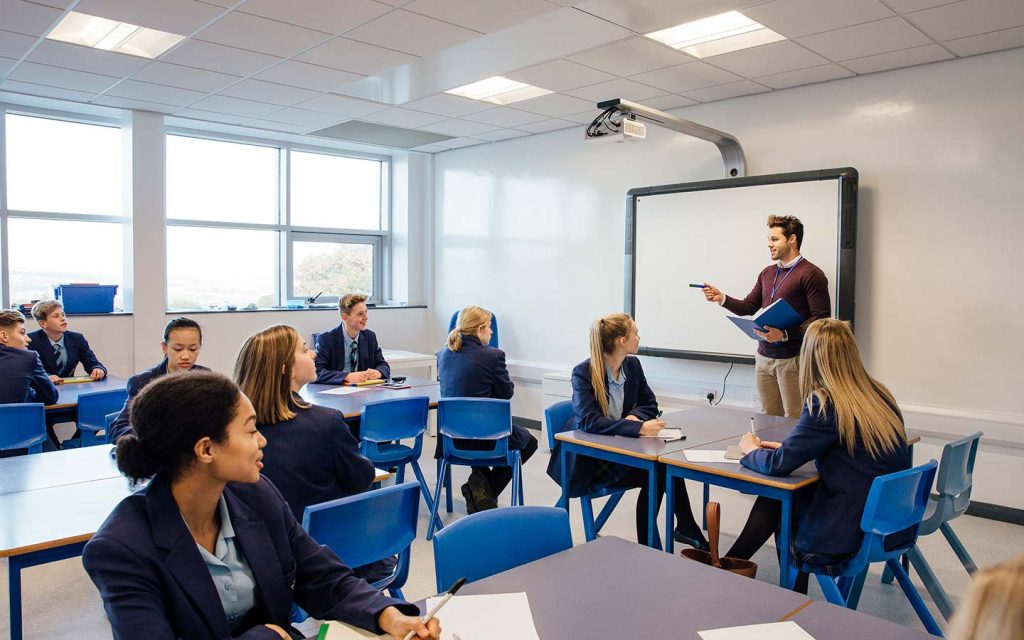I remember my first year in the classroom like it was yesterday—full of nerves, lesson plans that looked better on paper, and students who challenged me in ways I never expected. What I also remember? Feeling like a lot of my teacher prep didn’t quite match the reality.
That’s why comprehensive teacher training programs are so important. New educators don’t just need theory—they need practical tools, mentorship, emotional support, and ongoing learning. Because good teachers aren’t born. They’re trained, supported, and grown over time.
Let’s break down what truly effective teacher training should look like—and what new teachers deserve as they step into this incredible (and challenging) profession.
🧑🏫 What Is a Teacher Training Program?
:max_bytes(150000):strip_icc()/GettyImages-498101581-58ac9ab63df78c345b7355d9.jpg)
A teacher training program prepares aspiring educators to become effective, confident, and reflective classroom leaders. These programs can vary, but they typically include:
-
Coursework in pedagogy and educational theory
-
Student teaching experience
-
Certification or licensure prep
-
Mentoring and professional development
But the best ones go beyond checklists. They empower new educators to:
-
Build strong relationships
-
Manage real-world classrooms
-
Adapt and grow with student needs
-
Stay resilient in high-pressure situations
🎓 Core Components of a Strong Teacher Training Program
Whether you’re designing a training course or joining one, here are the essentials that make it truly comprehensive:
1. 📚 Solid Foundation in Pedagogy
Understanding how students learn is critical. New teachers need to know:
-
Learning theories (constructivism, behaviorism, etc.)
-
Bloom’s taxonomy and cognitive development
-
Strategies for differentiation
-
Assessment design and feedback
But keep it practical—don’t just teach theory, show how it looks in a real classroom.
2. 🧑🏫 Robust Classroom Management Training
This is where many programs fall short. New teachers often feel unprepared for behavior issues, routines, or engagement challenges.
Training should include:
-
Building a positive classroom culture
-
Proactive discipline strategies
-
Conflict resolution and de-escalation
-
Real classroom scenarios to practice with
I once had a training session that simulated student interruptions—and it taught me more than a dozen lectures.
3. 👩💻 Technology Integration
Today’s classrooms are digital. Teachers need to be comfortable with:
-
Learning management systems (LMS) like Google Classroom or Canvas
-
Digital tools (Kahoot, Nearpod, Edpuzzle)
-
Remote learning platforms
-
Tech troubleshooting basics
Tech should support instruction, not distract from it. Show new teachers how to use it strategically.
4. 🌎 Diversity, Equity, and Inclusion
No classroom is one-size-fits-all. Training must help teachers:
-
Understand cultural responsiveness
-
Avoid bias in instruction and discipline
-
Support English learners and students with disabilities
-
Create inclusive environments for all identities
This isn’t a “bonus module”—it’s a core part of effective teaching.
5. ✍️ Lesson Planning and Curriculum Design
Planning is overwhelming at first. Training should walk teachers through:
-
Backward design (starting with the end in mind)
-
Aligning lessons with standards
-
Using assessments to guide instruction
-
Building flexibility into plans
Give examples. Let them practice. And most importantly—help them learn how to reflect and revise.
6. 🧑🤝🧑 Mentorship and Coaching
The learning doesn’t stop after training. New teachers need:
-
A mentor teacher they can trust
-
Regular check-ins and feedback
-
A safe space to ask questions
-
Someone to say, “Yes, this is hard—and you’re not alone.”
The best training programs build support systems that last through that critical first year (and beyond).
7. 🔄 Ongoing Professional Development
Learning never stops. A great teacher training program models that by:
-
Introducing new educators to PD opportunities
-
Encouraging professional learning communities (PLCs)
-
Providing resources for continued growth
-
Helping teachers set goals for lifelong learning
If you train teachers to be reflective and open to feedback from day one, you set them up for long-term success.
📋 Bonus: What New Teachers Say They Really Needed
Based on real conversations (and my own rookie experience), here are things new teachers wish they had learned more about:
-
How to grade efficiently
-
Parent communication strategies
-
Supporting students with trauma
-
Time management and avoiding burnout
-
How to handle “that one student”
Comprehensive training should address the human side of teaching, not just the academic side.
✅ Final Thoughts: Training That Respects the Profession
Teaching is one of the hardest—and most meaningful—jobs out there. New educators deserve training that respects:
-
Their time
-
Their potential
-
Their emotional and professional journey
When we invest in strong teacher training, we’re not just helping educators—we’re helping every student they’ll ever teach.
Discover delicious recipes, helpful tips, and everyday inspiration. Visit Blessed Beyond Words for food ideas and practical life insights! – https://blessedbeyondwords.com



